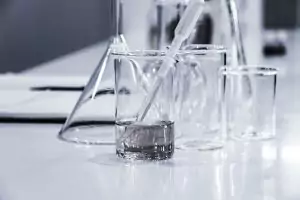In the realm of chemistry, the term “Kp” often arises when discussing chemical equilibria. But what exactly is Kp, and why is it essential in the study of chemistry? In this article, we will delve into the concept of Kp, exploring its significance, calculation, and the factors that influence it. Let’s embark on a journey to demystify Kp in chemistry.

✅ AI Essay Writer ✅ AI Detector ✅ Plagchecker ✅ Paraphraser
✅ Summarizer ✅ Citation Generator
Equilibrium Constant Kp: A Fundamental Concept
At its core, Kp represents the equilibrium constant for a chemical reaction in a gaseous state. It plays a pivotal role in understanding the behavior of gases at equilibrium. To grasp its significance, we need to break down the components that make up this term.
Partial Pressure as the Foundation of Kp
Before delving into Kp, it’s crucial to comprehend the concept of partial pressure. In a gas equilibrium, each individual gas exerts a specific pressure known as its partial pressure. The total pressure in the system is the sum of these partial pressures. Mathematically, we represent partial pressure as “P.”
Partial Pressure (P) = Pressure exerted by a specific gas component
Let’s consider a hypothetical system containing gases A, B, and C. The total pressure of the system (denoted as “P_total”) is the sum of the partial pressures of these gases:
P_total = P_A + P_B + P_C
Now that we have a fundamental understanding of partial pressure, we can proceed to explore Kp.
The Equation for Kp
Kp is expressed as the ratio of partial pressures of products to reactants in a gaseous chemical reaction at equilibrium. Its formula varies depending on the specific reaction but generally follows this format:
Kp = (P_product1^x * P_product2^y) / (P_reactant1^a * P_reactant2^b)
Here, the exponents (x, y, a, b) represent the stoichiometric coefficients of the products and reactants in the balanced chemical equation. The values of P_product1, P_product2, P_reactant1, and P_reactant2 are the partial pressures of the corresponding species at equilibrium.
Calculating Kp with Practical Examples
Let’s illustrate the calculation of Kp using a specific chemical reaction. Consider the reaction:
N2O4(g) ⇌ 2NO2(g)
We are provided with the following information at equilibrium:
- Moles of N2O4 = 2.00 mol
- Moles of NO2 = 1.00 mol
- Total pressure (P_total) = 150 kPa
To find Kp for this reaction, we’ll follow these steps.
Step 1: Calculate Mole Fractions
First, we calculate the mole fraction (represented as “M”) for each gas component:
M_N2O4 = (moles of N2O4) / (total moles in the system) = 2.00 mol / (2.00 mol + 1.00 mol) = 0.67
M_NO2 = (moles of NO2) / (total moles in the system) = 1.00 mol / (2.00 mol + 1.00 mol) = 0.33
Step 2: Calculate Partial Pressures
Next, we find the partial pressures of N2O4 and NO2 using their mole fractions and the total pressure:
P_N2O4 = M_N2O4 * P_total = 0.67 * 150 kPa = 100.5 kPa
P_NO2 = M_NO2 * P_total = 0.33 * 150 kPa = 49.5 kPa
Step 3: Calculate Kp
Now, we can substitute these partial pressures into the Kp expression:
Kp = (P_NO2^2) / (P_N2O4) = (49.5 kPa)^2 / 100.5 kPa = 24.5 kPa
So, for the given equilibrium, the value of Kp is 24.5 kPa.
Factors Influencing Kp: Temperature, Concentration and Pressure, Catalysts
Several factors can influence the value of Kp and the position of the equilibrium in a gas-phase reaction. Let’s explore these factors and their effects:
Changing the temperature of a gaseous system at equilibrium can alter the value of Kp and shift the equilibrium position. According to Le Chatelier’s Principle:
- Increasing the temperature favors the endothermic reaction, increasing the product’s partial pressures and Kp.
- Decreasing the temperature favors the exothermic reaction, reducing the product’s partial pressures and Kp.
Unlike temperature, changes in the concentration or pressure of a gaseous system do not affect the value of Kp but can shift the equilibrium position. Le Chatelier’s Principle applies here as well:
- Increasing the concentration of reactants shifts the equilibrium toward the products.
- Increasing the pressure shifts the equilibrium toward the side with fewer moles of gas.
The addition of a catalyst to a gaseous system at equilibrium has no effect on the value of Kp or the equilibrium position. Catalysts enhance the rate of both the forward and reverse reactions equally.
Kp vs. Kc Comparison
While Kp is a valuable concept in gas-phase equilibria, there’s another equilibrium constant, Kc, that deals with concentrations rather than partial pressures. Kc is used for reactions involving aqueous, liquid, or gaseous species. The choice between Kp and Kc depends on the nature of the equilibrium system being studied.
Kp is a fundamental concept, just like refluxing in chemistry, providing insights into the behavior of gases at equilibrium. Understanding Kp, partial pressures, and their relationship equips chemists with the tools to predict and manipulate gas-phase reactions. Whether you’re exploring the impact of temperature, concentration, or pressure, Kp serves as a critical parameter in unraveling the complexities of chemical equilibria.
In summary, Kp allows chemists to decipher the equilibrium constants of gaseous reactions, offering a window into the intriguing world of chemical dynamics.
FAQ
Follow us on Reddit for more insights and updates.





Comments (0)
Welcome to A*Help comments!
We’re all about debate and discussion at A*Help.
We value the diverse opinions of users, so you may find points of view that you don’t agree with. And that’s cool. However, there are certain things we’re not OK with: attempts to manipulate our data in any way, for example, or the posting of discriminative, offensive, hateful, or disparaging material.